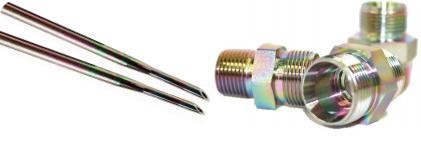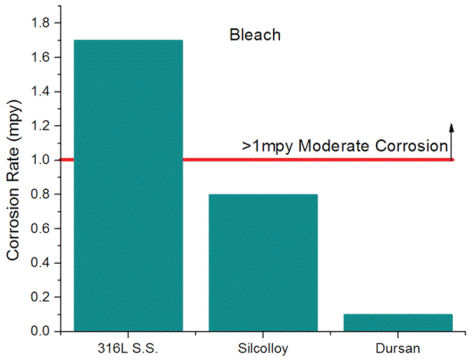Sponsored Content by SilcoTekAug 12 2016
Introduction
Biopharma and medical device manufacturers have to adhere to the strictest regulations to ensure a high level of sanitation and purity in the industry.
In addition to the ever-increasing demand for product purity, these manufacturers have to improve productivity and at the same time should be able to keep the costs down.
Well-known construction materials used in diagnostic and production applications do not offer the performance and lifespan needed for end users’ ultimate workflow.
Output and profitability are affected by repeated cleaning, corrosion from bleach, and damaged/worn componentry.
The pharma and medical sectors largely depend on polymer coatings or stainless steel alone for bio-inertness and compatibility; however, these materials are prone to sticking, corrosion, and wear that can affect the performance and purity.
SilcoTek® offers advanced coatings that make devices and diagnostic equipment perform better, work faster, and last longer. These coatings enable OEMs to produce flexible and high-performance products with reduced maintenance costs.
Chemical vapor deposition (CVD) is a process that produces a nanoscale coating of elemental silicon, oxygen, and carbon. When compared to stainless steel, this coating is more resistant to chemical attack and offers durability and functionality that considerably exceeds fluoropolymers.
Material challenges in biopharma and medical industries
Some of the common material issues faced in the biopharma and medical industries are as follows:
- High costs from corrosion - Super-austenitic grades of stainless steel can also corrode and affect the products’ purity, particularly when bleach is employed in cleaning cycles.
- Poor reliability - Polymer coatings can readily delaminate during regular maintenance, whereas metal ions from stainless steel can easily leach into the process streams, leading to false results.
- Frequent maintenance - Biomolecules, including proteins, can quickly adsorb onto the surface of stainless steel, thus requiring parts replacement, manual maintenance, and prolonged delays.
Problems solved by SilcoTek® coatings
SilcoTek® coatings are designed to overcome the following issues:
- high costs due to corrosion, particularly from bleach
- poor performance caused by protein sticking
- inconsistent analytical results induced by chemical reactivity
- contamination caused by leaching of metal ions from the equipment
- frequent replacement due to material wear
Applications where SilcoTek® coatings boost performance
SilcoTek® coatings increase performance in the following applications:
- medical devices
- mass spectroscopy
- immunoassay analysis
- liquid chromatography
- consumable disposal
- reaction and mixing
Components that benefit from SilcoTek® coatings
SilcoTek® coatings benefit the following components:
- probes
- needles
- tubing
- sensors
- valves
- filters
- vessels/reactors
- consumables
Advanced surfaces for advanced performance
Patented coatings from SilcoTek® offer many benefits over other alternatives, and provide excellent performance, flexibility in system design and fabrication, and deployment to both the medical device and pharma manufacturers.
Innovative deposition process makes integration easy
In the gas-phase CVD process, the coating is bound to the base substrate’s molecular structure. This results in a flexible layer that can be easily bent with no flaking, unlike PTFE or other polymers.
In addition, narrow internal passageways and complex geometries can be easily and meticulously coated (Figure 1).

Figure 1. SilcoTek® improves parts made of stainless steel, ceramics, glass, and more, even those with complex geometries or high aspect ratios.
Low surface energy prevents protein sticking
In the medical industry, it’s preferable to prevent the adsorption of non-specific proteins onto the metal surfaces.
SilcoTek® coatings are designed to give a low energy yet strong surface, preventing the retention of moisture, proteins, etc. As a result, analytical results are improved and higher throughput is realized.
SilcoTek®-coated stainless steel provides durability as well as better protein resistance to endure routine cleaning and maintenance procedures, as opposed to standard products like fluoropolymers.
Excellent Corrosion Protection for Longer Usable Life
SilcoTek® coatings can significantly enhance the corrosion resistance of alloys, including stainless steel, thereby ensuring excellent sanitation and purity (Figure 2).

Figure 2. SilcoTek® coatings (right) allow the use of concentrated bleach without any of the corrosion issues that are common with bare stainless steel.
Making the impossible possible
SilcoTek® offers customers a unique service experience, placing the utmost importance on their components’ quality. This promotes a continuous commitment to offer high-quality, fast, and error-free coatings on a daily basis.
SilcoTek® coating services can become the greatest asset to a customer’s supply chain.
About SilcoTek
SilcoTek® is the world’s leading provider of coatings applied by chemical vapor deposition (CVD). Whether in the laboratory, plant, or field, SilcoTek’s patented coating technologies provide advanced surface solutions that typical materials or coatings cannot.
Once a division of Restek® Corporation, SilcoTek was established as an independent company on January 1st, 2009. Since then, SilcoTek’s coatings have helped engineers, analysts, chemists and more save time, increase their productivity, and achieve performance they didn’t know was possible.
SilcoTek’s technology was born in the chromatography lab for lowering detection limits in instrumentation, but today they are also found in semiconductor, aerospace, automotive, biomedical, oil, gas, and petrochemical industries, amongst others.
Regardless of the properties you need, turn to SilcoTek to provide surfaces on your existing parts that help you create a better world; better science, better performance, better health, and more.
Sponsored Content Policy: News-Medical.net publishes articles and related content that may be derived from sources where we have existing commercial relationships, provided such content adds value to the core editorial ethos of News-Medical.Net which is to educate and inform site visitors interested in medical research, science, medical devices and treatments.